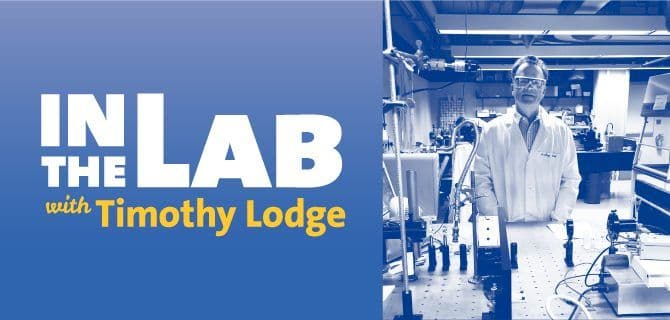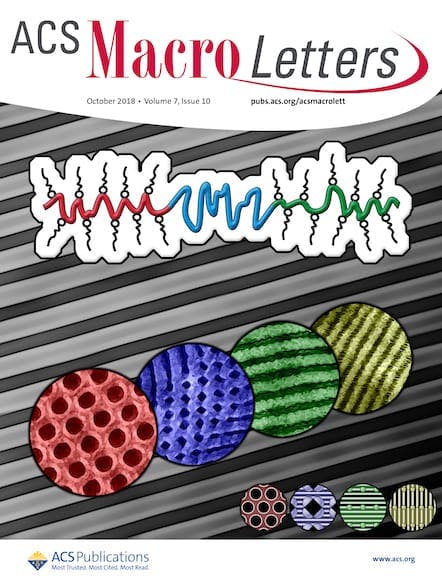At the highest levels of research, it can be easy to become nearsighted, focusing only on your own narrow specialty. Thankfully, that’s not the case with Timothy Lodge. Lodge is a Regents Professor in the Department of Chemistry and Department of Chemical Engineering and Materials Science at the University of Minnesota. He’s the Editor-in-Chief of […]

Lodge prides himself on the collaborative, interdisciplinary nature of his lab. While most polymer chemistry labs focus on either synthesis or properties, Lodge and his colleagues tackle both. They combine synthesis of model polymers, especially block copolymers, with advanced physical characterization tools.
“Our set of experimental tools is almost unmatched in breadth,” Lodge says. “It routinely includes scattering tools like light, neutron, and x-rays; microscopy tools such as TEM, SEM, and cryoTEM; rheology; and NMR.”
The lab’s scope attracts students and collaborators from far and wide. Students come from Ph.D. programs in chemistry, chemical engineering, and materials science; many are co-advised by professors with other areas of expertise. Because the lab’s work is at the intersection of fundamental science and technological applications, research is funded both by government agencies such as NSF and companies.
This openness has led to interesting discoveries. For example, Lodge and his colleagues recently revealed a new understanding of methylcellulose (MC), a commercial product used in food, pharmaceutical products, and building materials. It has been used for more than 100 years, but its gelation and phase separation properties were never understood—until now. “Our team showed for the first time that MC actually self-assembles into 15 nanometer diameter fibers on heating, a completely unanticipated result,” Lodge says. “This discovery will enable a suite of new applications for MC and related sustainable polymers.”
Other accomplishments include the development of “ion gels,” soft solids with many of the properties of the constituent ionic liquid. Researchers have used these gels as the so-called gate dielectric in organic transistors and shown that they outperform all other candidate materials. They’ve also made luminescent gels for display applications, and thermoreversible and photoreversible gels that can be processed in the liquid state and solidified on demand.
Timothy Lodge’s interests outside work are similarly broad. You’re as likely to find him hiking outdoors as taking in a classical music performance. He’s an avid football fan—though not the kind you might think. Lodge was born in England, and follows Premier League teams Manchester City and Manchester United.
He’s well respected by his students. Cecilia Hall is a third-year graduate student in Lodge’s lab, studying block polymers in ionic liquid.
“Dr. Lodge doesn’t micromanage, but he’s accessible when I have questions,” she says. “He’s helping me develop into a scientist.”
5 Recent Papers from the Lab of Timothy Lodge
- Thermodynamics of Aqueous Methylcellulose Solutions
Macromolecules, 2015, 48 (19), pp 7205–7215
DOI: 10.1021/acs.macromol.5b01544 - Fibrillar Structure in Aqueous Methylcellulose Solutions and Gels
Macromolecules, 2013, 46 (24), pp 9760–9771
DOI: 10.1021/ma4021642 - Thermally Reversible Ion Gels with Photohealing Properties Based on Triblock Copolymer Self-Assembly
Macromolecules, 2015, 48 (16), pp 5928–5933
DOI: 10.1021/acs.macromol.5b01366 - Solution Processable, Electrochromic Ion Gels for Sub-1 V, Flexible Displays on Plastic
Chem. Mater., 2015, 27 (4), pp 1420–1425
DOI: 10.1021/acs.chemmater.5b00026 - High Capacitance, Photo-Patternable Ion Gel Gate Insulators Compatible with Vapor Deposition of Metal Gate Electrodes
ACS Appl. Mater. Interfaces, 2014, 6 (21), pp 19275–19281
DOI: 10.1021/am505298q
